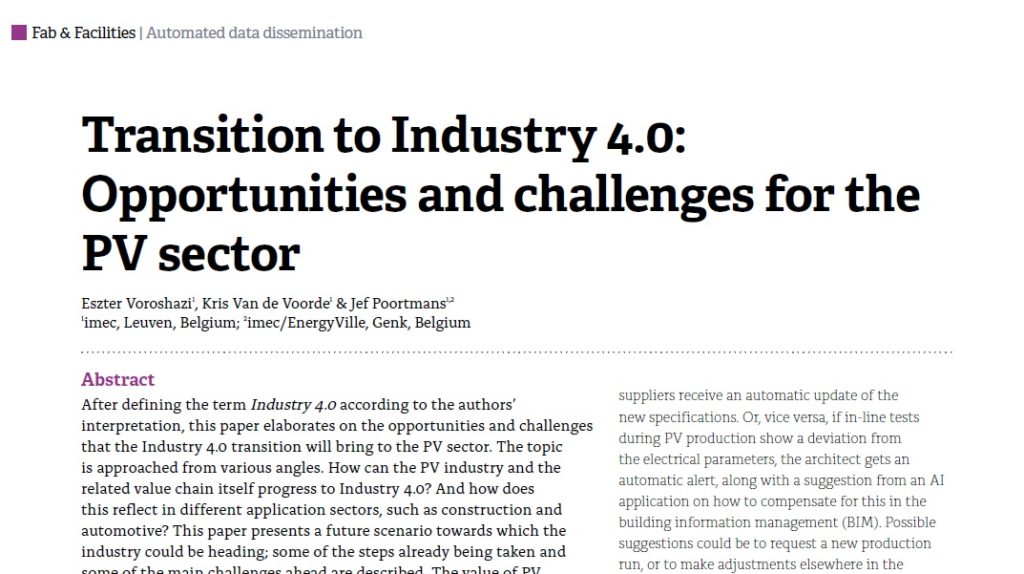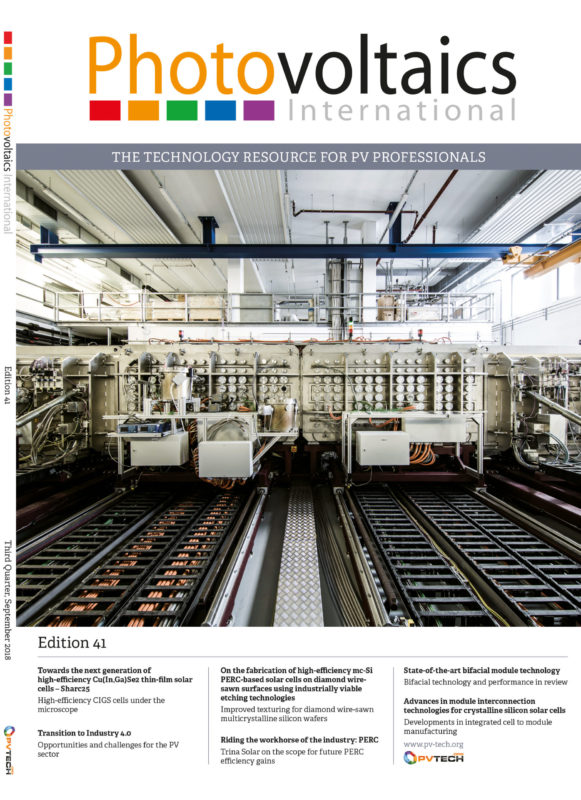By Dr. Eszter Voroshazi; Kris Van de Voorde; Dr. Jozef Poortmans
After defining the term Industry 4.0 according to the authors’ interpretation, this paper elaborates on the opportunities and challenges that the Industry 4.0 transition will bring to the PV sector. The topic is approached from various angles. How can the PV industry and the related value chain itself progress to Industry 4.0? And how does this reflect in different application sectors, such as construction and automotive? This paper presents a future scenario towards which the industry could be heading; some of the steps already being taken and some of the main challenges ahead are described. The value of PV technology as an enabler for other sectors, such as edge versus cloud computing, to move into Industry 4.0 is also touched upon. Additionally, a number of enablers and boundary conditions are highlighted in the context of Industry 4.0 and their relevance to the PV industry (legislation, cyber security, etc.) The status of Industry 4.0 in PV compared with other sectors is also explored. Wherever appropriate and possible, examples of projects and activities that illustrate the described topics are given.


